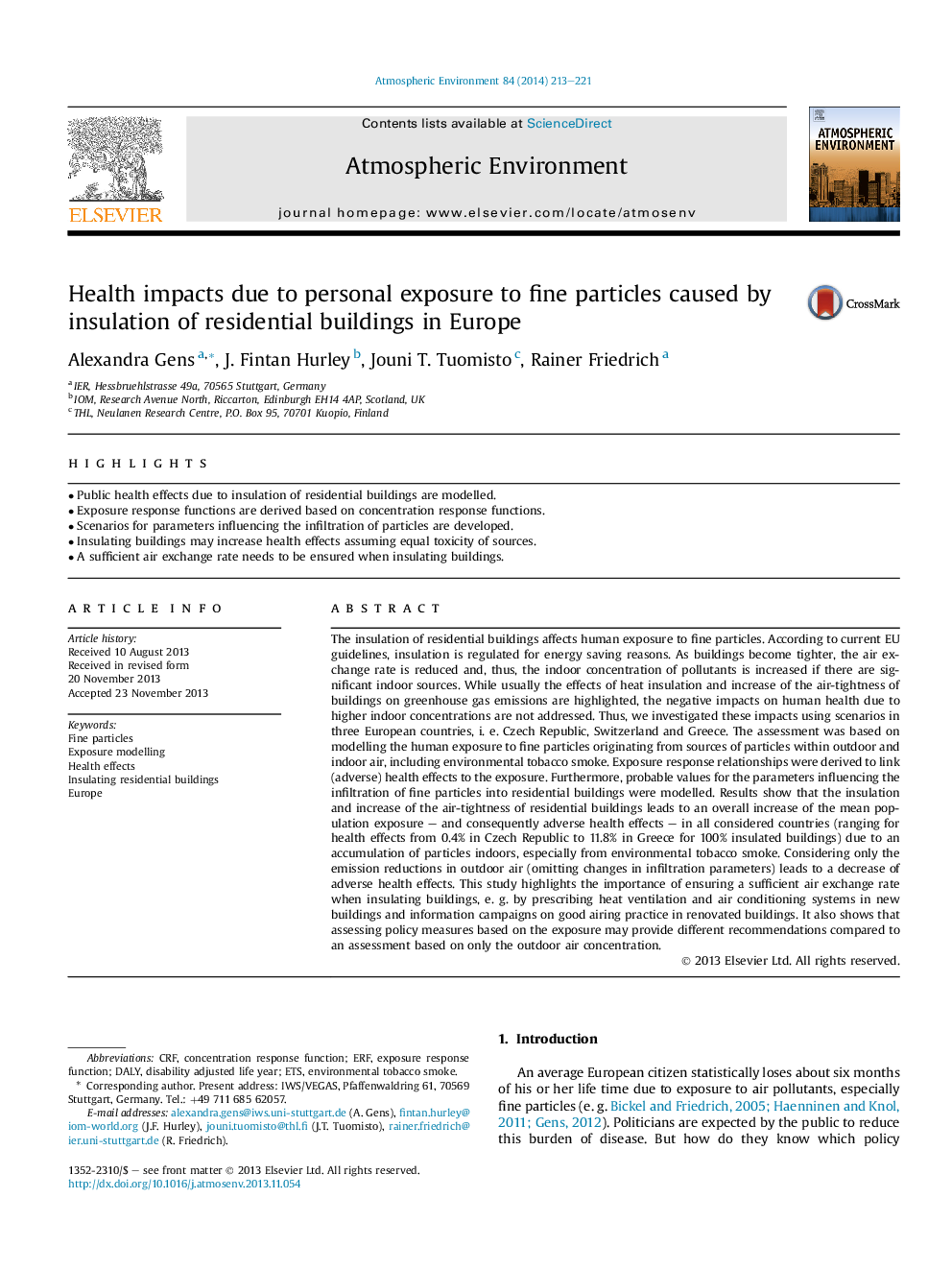| کد مقاله | کد نشریه | سال انتشار | مقاله انگلیسی | نسخه تمام متن |
|---|---|---|---|---|
| 6341084 | 1620387 | 2014 | 9 صفحه PDF | دانلود رایگان |
- Public health effects due to insulation of residential buildings are modelled.
- Exposure response functions are derived based on concentration response functions.
- Scenarios for parameters influencing the infiltration of particles are developed.
- Insulating buildings may increase health effects assuming equal toxicity of sources.
- A sufficient air exchange rate needs to be ensured when insulating buildings.
The insulation of residential buildings affects human exposure to fine particles. According to current EU guidelines, insulation is regulated for energy saving reasons. As buildings become tighter, the air exchange rate is reduced and, thus, the indoor concentration of pollutants is increased if there are significant indoor sources. While usually the effects of heat insulation and increase of the air-tightness of buildings on greenhouse gas emissions are highlighted, the negative impacts on human health due to higher indoor concentrations are not addressed. Thus, we investigated these impacts using scenarios in three European countries, i. e. Czech Republic, Switzerland and Greece. The assessment was based on modelling the human exposure to fine particles originating from sources of particles within outdoor and indoor air, including environmental tobacco smoke. Exposure response relationships were derived to link (adverse) health effects to the exposure. Furthermore, probable values for the parameters influencing the infiltration of fine particles into residential buildings were modelled. Results show that the insulation and increase of the air-tightness of residential buildings leads to an overall increase of the mean population exposure - and consequently adverse health effects - in all considered countries (ranging for health effects from 0.4% in Czech Republic to 11.8% in Greece for 100% insulated buildings) due to an accumulation of particles indoors, especially from environmental tobacco smoke. Considering only the emission reductions in outdoor air (omitting changes in infiltration parameters) leads to a decrease of adverse health effects. This study highlights the importance of ensuring a sufficient air exchange rate when insulating buildings, e. g. by prescribing heat ventilation and air conditioning systems in new buildings and information campaigns on good airing practice in renovated buildings. It also shows that assessing policy measures based on the exposure may provide different recommendations compared to an assessment based on only the outdoor air concentration.
Journal: Atmospheric Environment - Volume 84, February 2014, Pages 213-221
